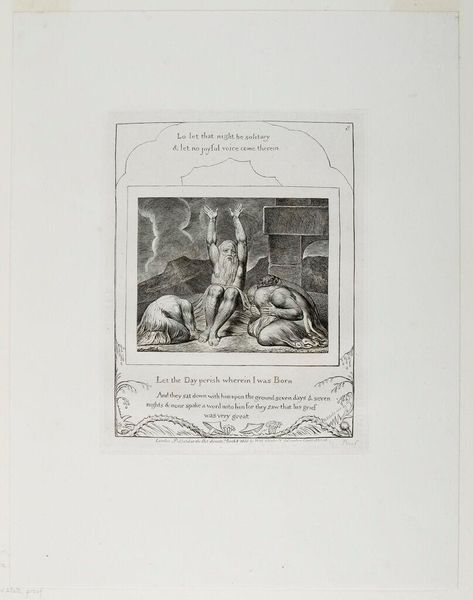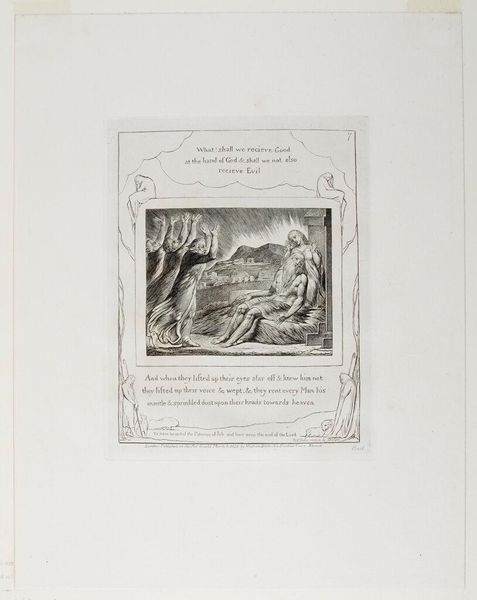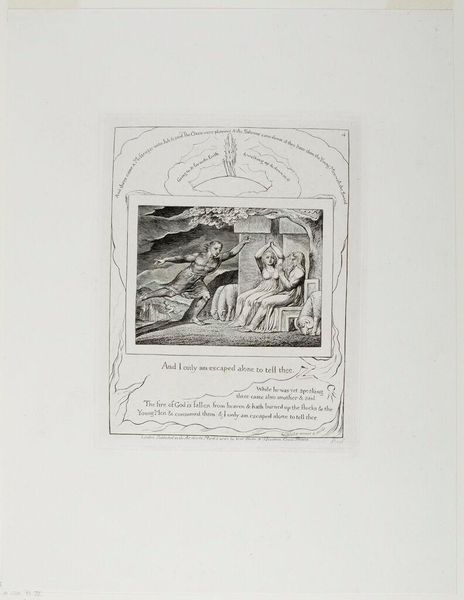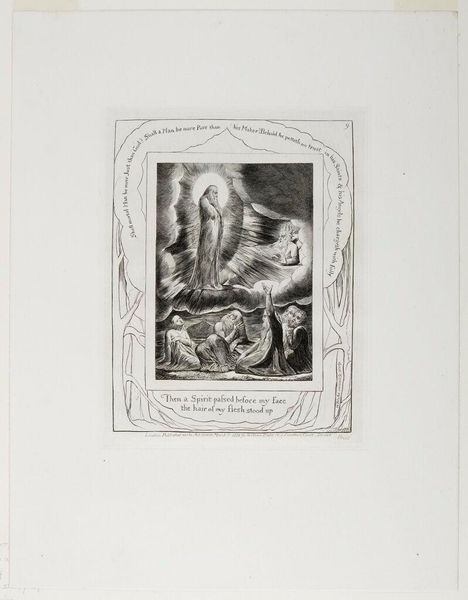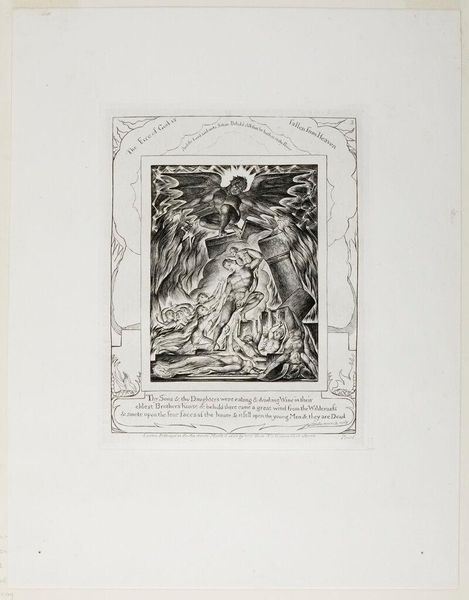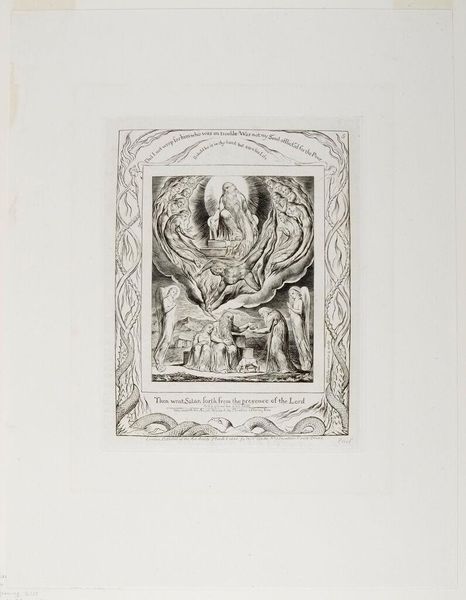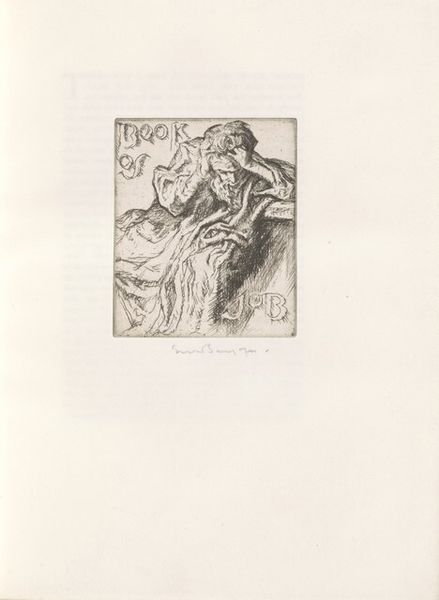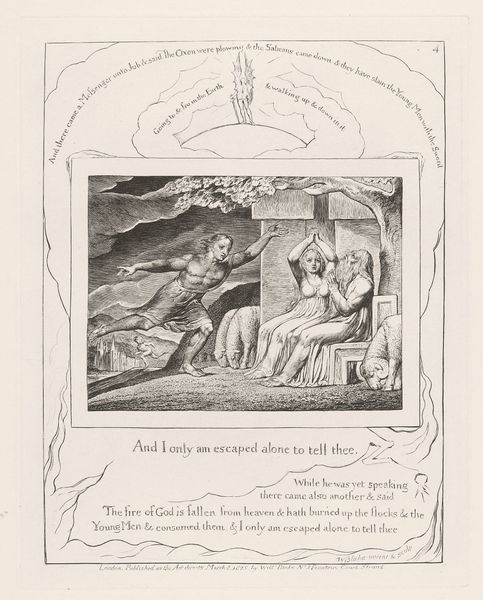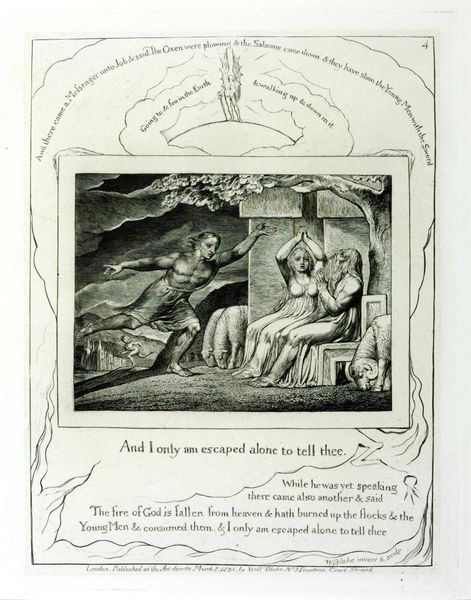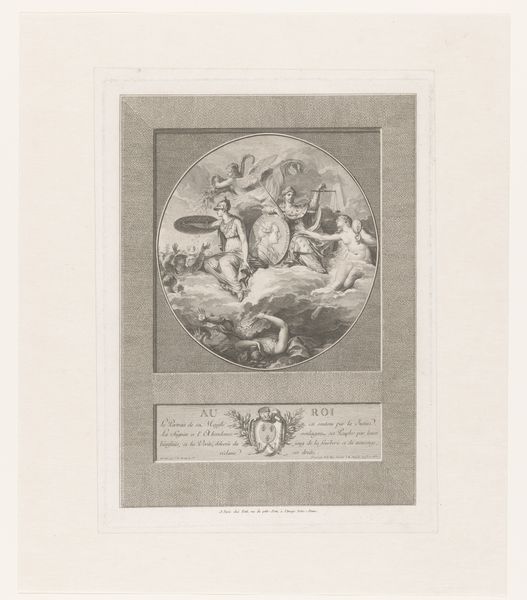
Copyright: CC0 1.0
Curator: There's a deep sorrow in this piece, a sense of profound isolation. I think you can really feel it in the starkness of William Blake's etching, "The just, upright man is laughed to scorn." Editor: The etching itself—the very act of carving into that metal plate—strikes me as a physical manifestation of the scorn he depicts. You know, the labor involved, the precise cuts... Curator: Absolutely, each line feels deliberate, a weight of judgment. The figures seem caught between despair and defiance. I wonder, what sort of inner turmoil fueled Blake to create such a work. Editor: It's not just the feeling, though, is it? Look at the composition. The way he’s using line and shadow gives such gravity to the figures, makes it so intense and immediate. Curator: Yes, it’s a harrowing vision. Editor: Indeed, you can almost feel the weight of the printing press.
Comments
No comments
Be the first to comment and join the conversation on the ultimate creative platform.
